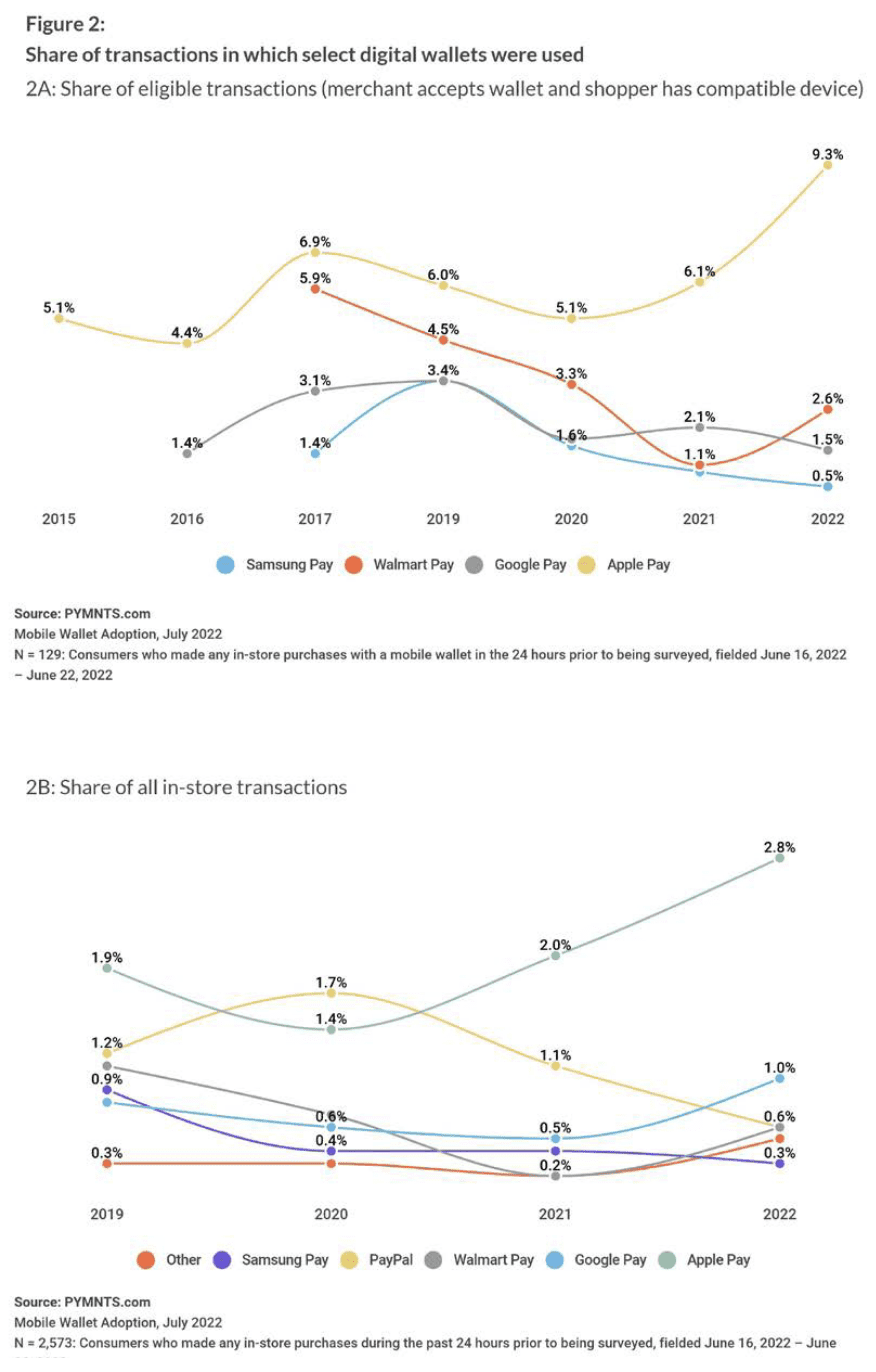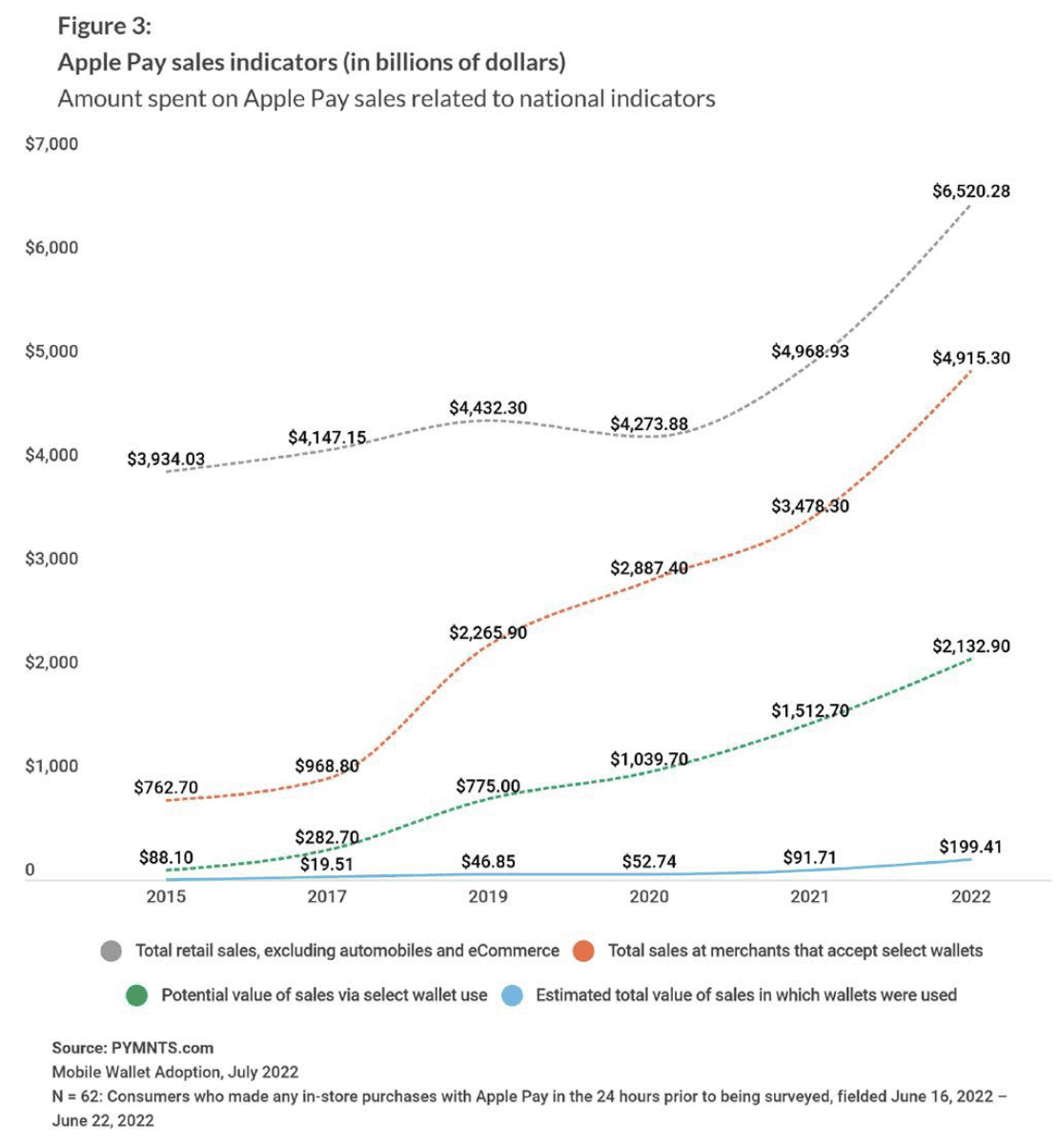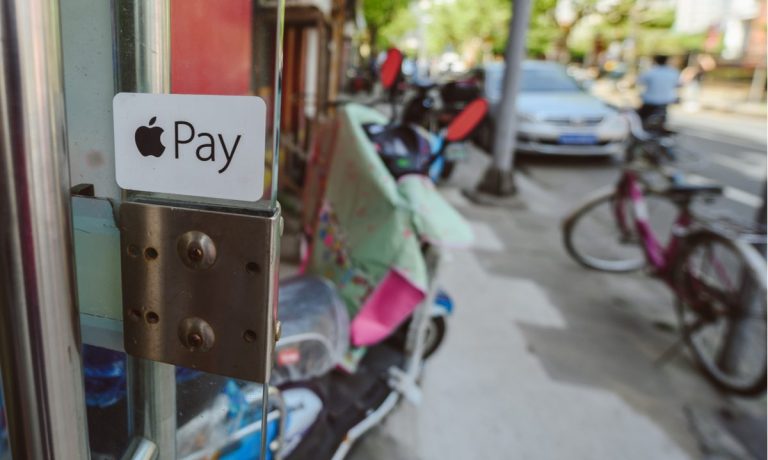Mobile wallets are catching on — especially for in-store commerce.
There’s a significant greenfield opportunity out there for the various “Pays,” and Apple — specifically, Apple Pay — is taking significant market share.
As noted in the recent report, “Mobile Wallets Adoption: Apple Pay @8 – Still the Big Fish In A Small Mobile Wallets Pond,” mobile wallets have been growing in popularity several years into their availability.
However, the total penetration has been relatively slight, at only about 5.8% of in-store transactions as measured in the second quarter of this year. Growth has been heady, albeit off a low base, as that 5.8% tally is 29% higher than the penetration of in-store commerce in the previous year.
Meanwhile, contactless cards have gained prominence in the brick-and-mortar setting, according to data gleaned from more than 2,280 consumers.
Among the reasons “why” penetration is low, we found that consumers appear to feel that contactless cards are more secure than mobile wallets. Roughly half of contactless card users cite security as a leading reason for choosing this method, while only 31% of mobile wallet users identify either low chances of fraud or data security as important factors.
Advertisement: Scroll to Continue
Drill down a bit, and Apple Pay has managed to gain 48% of the mobile wallet transactions in that setting, though it must be noted that 75% of merchants accept Apple Pay and Google Pay.
But as the charts below show, Apple Pay still has a commanding lead over the 17% share notched by Google Pay, and well ahead of the other options such as PayPal, Walmart Pay and Samsung Pay.
Yet, in terms of scale, consider the fact that consumers spent just 3.1 cents of every in-store dollar using Apple Pay in Q2 2022. That equates to $199 billion out of $4.9 trillion in total sales at U.S. merchants that accept the wallet.
Apple has some work to do within its own ecosystem, it seems. Drilling down a bit, we see that consumers chose Apple Pay for only 9.3% of eligible in-store transactions, defined as purchases at a merchant that accepts the wallet by a shopper with a compatible device. To extrapolate a bit: This means nine in 10 consumers with iPhones in their pockets preferred to pay some other way.
 In terms of scale, consider the fact that consumers spent just 3.1 cents of every in-store dollar using Apple Pay in Q2 2022. That equates to $199 billion out of $4.9 trillion in total sales at U.S. merchants that accept the wallet.
In terms of scale, consider the fact that consumers spent just 3.1 cents of every in-store dollar using Apple Pay in Q2 2022. That equates to $199 billion out of $4.9 trillion in total sales at U.S. merchants that accept the wallet.
 Get the report: Mobile Wallet Adoption: Apple Pay @8: Still The Big Fish In A Small Mobile Wallets Pond
Get the report: Mobile Wallet Adoption: Apple Pay @8: Still The Big Fish In A Small Mobile Wallets Pond

